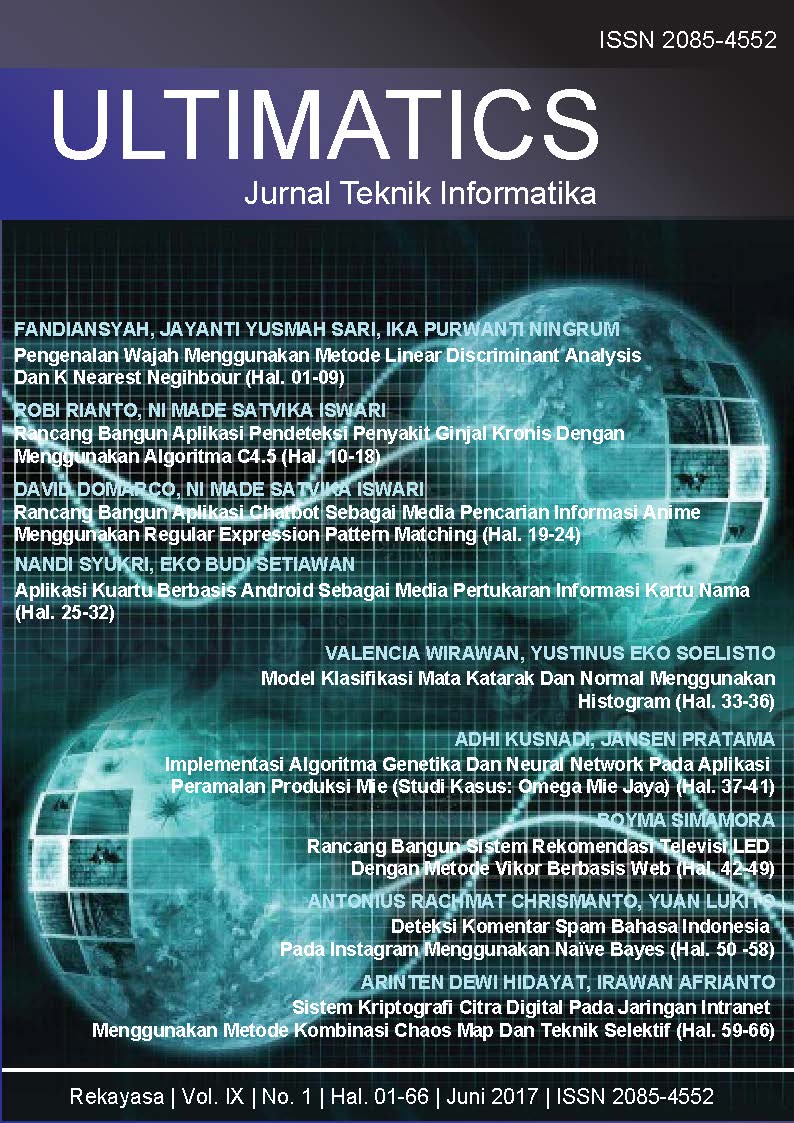Sistem Kriptografi Citra Digital Pada Jaringan Intranet Menggunakan Metode Kombinasi Chaos Map Dan Teknik Selektif
DOI:
https://doi.org/10.31937/ti.v9i1.565Abstract
Many organizations use design applications to draw the products they create. The drawings are digital files that have various formats of type and size. The images sometimes have to be protected because they are secret designs, such as the design of military vehicles, weapons and other designs. In order to secure digital data, cryptography is one of the solution, including if the data to be secured in the form of digital images. Algorithms that can be used to perform cryptography in digital image one of them is chaos map using Arnold cat map, logistics map and application of selective technique. Chaos was chosen for three reasons: sensitivity to initial conditions, random behavior, and no repetitive periods. While the application of selective technique means only encrypt some elements in the image but the effect of the whole image is encrypted. Cryptography in the image is also implemented because the organization using an intranet network to deliver its design drawings from one division to another. This allows for data tapping or exploitation of digital images while inside the intranet network. So it is necessary to develop a cryptographic system on the intranet network that has the ability to secure digital images that are in the network. The results obtained from black box testing, white box and network security testing show that the built system has been able to secure digital images when sent over the organization's intranet network.
Index Terms”Cryptography, Image, Chaos Map Algorithm, Selective Technique, Intranet.
Downloads
Downloads
Published
How to Cite
Issue
Section
License
Authors retain copyright and grant the journal right of first publication with the work simultaneously licensed under a Creative Commons Attribution-ShareAlike International License (CC-BY-SA 4.0) that allows others to share the work with an acknowledgement of the work's authorship and initial publication in this journal.
Authors are able to enter into separate, additional contractual arrangements for the non-exclusive distribution of the journal's published version of the work (e.g., post it to an institutional repository or publish it in a book), with an acknowledgement of its initial publication in this journal.
Copyright without Restrictions
The journal allows the author(s) to hold the copyright without restrictions and will retain publishing rights without restrictions.
The submitted papers are assumed to contain no proprietary material unprotected by patent or patent application; responsibility for technical content and for protection of proprietary material rests solely with the author(s) and their organizations and is not the responsibility of the ULTIMATICS or its Editorial Staff. The main (first/corresponding) author is responsible for ensuring that the article has been seen and approved by all the other authors. It is the responsibility of the author to obtain all necessary copyright release permissions for the use of any copyrighted materials in the manuscript prior to the submission.















